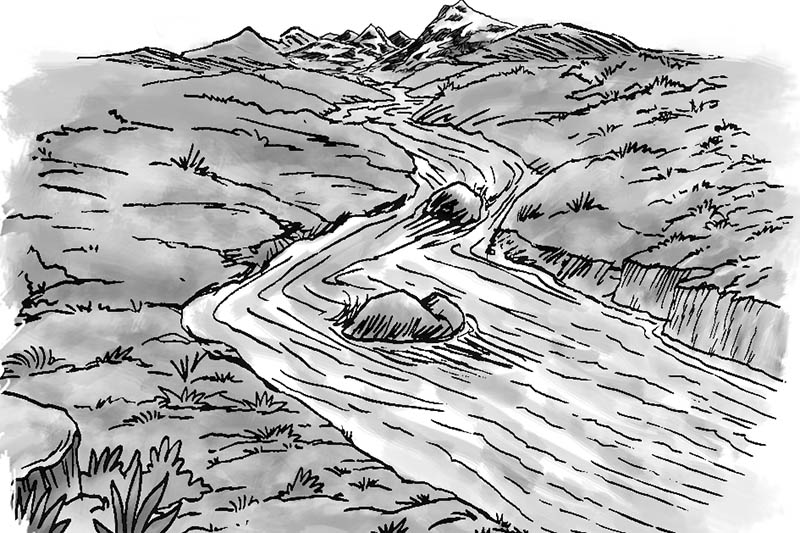Three Gorges, NEA, seal deal to form joint venture
Kathmandu, November 16
Ten months after Nepal Electricity Authority and China Three Gorges International Corporation inked a joint venture agreement, the power authority and CTGIC today signed a deal to form a joint venture company to develop the 750-megawatt West Seti Hydropower Project.
Though the NEA board, led by energy secretary, had endorsed the JVA allowing the authority to form a joint venture company to expedite the National Priority Project, CTGIC had taken a longer time to endorse the JVA through its board.
The agreement signed today between NEA Managing Director Kulman Ghising and Yao Feixiong, director of investment department of CTGIC, has paved the way for forming a joint venture company to take forward the project. The joint venture company will develop a business plan to execute the project and the project development agreement will be signed with the Investment Board Nepal.
Maha Prasad Adhikari, CEO of IBN, which looks into implementation of hydropower projects with generation capacity above 500 megawatts, has said that NEA and CTGIC have been told to form the JVC as early as possible since the project initiation date has already passed. As per the memorandum of understanding signed between Investment Board Nepal and the CWE Corp — a subsidiary of CTGIC — in February 2012, construction of the project was supposed to begin in 2014.
The Chinese company has so far carried out the detailed study of the project. The project is likely to be completed in 79 months at a tentative cost of $1.81 billion.
NEA will have 25 per cent equity investment in the JVC, whereas CTGIC will hold three-fourth of the stake in the company. The company has to allocate 10 per cent shares to the public.
Earlier, the Chinese company had put forth a number of conditions to invest in the project, including capitalising the expenses incurred by CTGIC in conducting necessary studies of the project and had sought assurance of market for the electricity generated.
It had also said that since NEA was a joint venture partner in the project, the authority should step in as guarantor to obtain loan (from Exim Bank of China or any other Chinese bank) for investment in the project. The Chinese company has also sought special consideration in share allocation for locals. As per the rules, allotment of 10 per cent shares to locals of the project site area is mandatory for hydel projects. However, CTGIC is unwilling to allot shares to locals. CTGIC had also expressed concerns about tariff policy of NEA.
According to NEA Spokesperson Prabal Adhikari, no deal has been struck on CTGIC concerns. “The joint venture company — West Seti Hydropower Development Company — will deal with the issues once the JVC is formed,” said Adhikari.
The joint venture company will be formed after IBN approves the JVA and the investment proposal of CTGIC. The West Seti Hydropower Development Company will be governed by the board in which CTGIC and NEA will appoint members.
Located in the far western region of Nepal, the 750-MW West Seti will be developed as a reservoir project, with plans to sell the generated electricity in the domestic market. As per the tariff policy of NEA, the project can sell electricity at Rs 12.40 per unit during dry season (from December to May). It has to supply at least 35 per cent of total annual electricity generation during the dry season. Likewise, reservoir projects get Rs 7.10 per unit during wet season (from June to November) for 50 per cent of the total annual electricity generation and the tariff will go down by a similar percentage for the excess energy (above 50 per cent in wet season).
As foreign investment joint venture, the company can sign US dollar-denominated power purchase agreement with NEA for 10 years or until the payback period of foreign loan portion, whichever comes first.
What next?
- IBN has to endorse JVA and investment proposal of CTGIC
- JVC will be formed with 75pc stake of CTGIC and 25pc of NEA
- Board members will be appointed in JVC
- Business plan or plan of action will be developed
- Project development agreement will be signed with IBN
- Environmental Impact Assessment needs to be carried out and approved by the Ministry of Environment
- Site clearance, land acquisition
- PPA with NEA will be signed
- Construction contract will be signed






